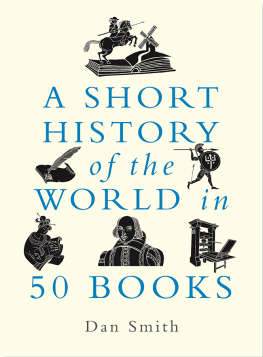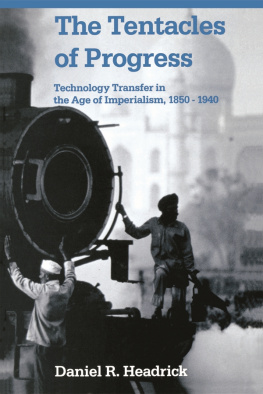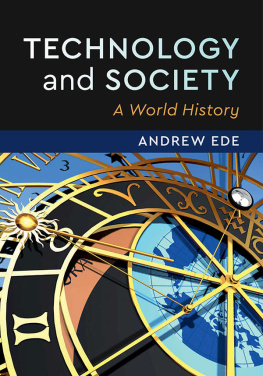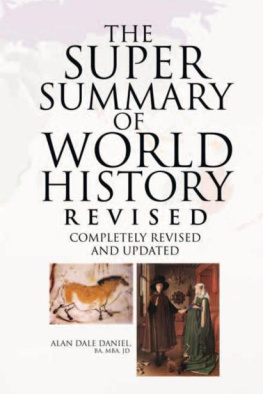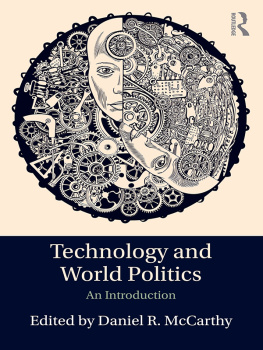Headrick Daniel R. - Technology: A World History
Here you can read online Headrick Daniel R. - Technology: A World History full text of the book (entire story) in english for free. Download pdf and epub, get meaning, cover and reviews about this ebook. year: 2009, publisher: Oxford University Press, Incorporated, genre: History. Description of the work, (preface) as well as reviews are available. Best literature library LitArk.com created for fans of good reading and offers a wide selection of genres:
Romance novel
Science fiction
Adventure
Detective
Science
History
Home and family
Prose
Art
Politics
Computer
Non-fiction
Religion
Business
Children
Humor
Choose a favorite category and find really read worthwhile books. Enjoy immersion in the world of imagination, feel the emotions of the characters or learn something new for yourself, make an fascinating discovery.

- Book:Technology: A World History
- Author:
- Publisher:Oxford University Press, Incorporated
- Genre:
- Year:2009
- Rating:3 / 5
- Favourites:Add to favourites
- Your mark:
- 60
- 1
- 2
- 3
- 4
- 5
Technology: A World History: summary, description and annotation
We offer to read an annotation, description, summary or preface (depends on what the author of the book "Technology: A World History" wrote himself). If you haven't found the necessary information about the book — write in the comments, we will try to find it.
Technology: A World History — read online for free the complete book (whole text) full work
Below is the text of the book, divided by pages. System saving the place of the last page read, allows you to conveniently read the book "Technology: A World History" online for free, without having to search again every time where you left off. Put a bookmark, and you can go to the page where you finished reading at any time.
Font size:
Interval:
Bookmark:
Technology: A World History


Daniel R. Headrick


Oxford University Press, Inc., publishes works that further
Oxford Universitys objective of excellence
in research, scholarship, and education.
Oxford New York
Auckland Cape Town Dar es Salaam Hong Kong Karachi
Kuala Lumpur Madrid Melbourne Mexico City Nairobi
New Delhi Shanghai Taipei Toronto
With offices in
Argentina Austria Brazil Chile Czech Republic France Greece
Guatemala Hungary Italy Japan Poland Portugal Singapore
South Korea Switzerland Thailand Turkey Ukraine Vietnam
Copyright 2009 by Oxford University Press, Inc.
Published by Oxford University Press, Inc.
198 Madison Avenue, New York, New York 10016
www.oup.com
Oxford is a registered trademark of Oxford University Press
All rights reserved. No part of this publication may be reproduced,
stored in a retrieval system, or transmitted, in any form or by any means,
electronic, mechanical, photocopying, recording, or otherwise,
without the prior permission of Oxford University Press.
Library of Congress Cataloging-in-Publication Data
Headrick, Daniel R.
Technology : a world history / Daniel R. Headrick.
p. cm.(The new Oxford world history)
Includes bibliographical references and index.
ISBN 978-0-19-515648-5; 978-0-19-533821-8 (pbk.)
1. TechnologyHistory. I. Title.
T15.H42 2008
609dc22 2008033426
1 3 5 7 9 8 6 4 2
Printed in the United States of America
on acid-free paper
Frontispiece: A turbine at the Niagara Falls Power Company.
Photography Collection, Miriam and Ira D. Wallach Division of Art, Prints and Photographs,
The New York Public Library, Astor, Lenox and Tilden Foundations
CHAPTER 3 Iron, Horses, and Empires
(1500 BCE500 CE)
CHAPTER 4 Postclassical and Medieval Revolutions
(5001400)
CHAPTER 8 Toward a Postindustrial World
(19392007)
The history of humans and technology is a long one, going back millions of years to the use of stones as tools and to their fashioning into more efficient devices through skillful flaking. Ancient peoples discovered the use of fire as a survival technology, only much later devising increasingly complicated systems of water management for irrigation and later still for hydroelectric power and many other uses. As communications technology developed closer to our own times, it brought people into greater contact and made them more knowledgeable and cosmopolitan. Medical and agricultural technology improved life expectancy, especially in our modern era; artificial organs could replace dying ones, and chemical and nuclear medicines could stop diseases such as cancers in their tracks.
Although such technology appears to have an exclusively personal function, making life more pleasant and efficient, ambitious leaders of ancient and more recent times have commandeered technology to help them build states and to conquer other peoples. Aqueducts stretching for hundreds of miles and the building of ships for warfare and trade were among the technologies that allowed leaders of states to maintain and expand their power. Increasingly, the comparatively simple weaponry of Stone Age people gave way to more complex machinery for conquest and destruction, weaponry that has been put to ever more devastating use in the past century.
It is hardly surprising, then, that people have had ambivalent feelings about technology of all sortsand not just about the sophisticated machines of our own day. Pliny the Elder in the first century CE praised iron for its ability to cut stone and fell trees: But this metal serves also for war, murder and robbery, he wrote in Natural History, and this I hold to be the most blameworthy product of the human mind. Critics have also charged technology with pollution and other devastating effects on the natural world. For all its ability to provide increasing ease for the worlds inhabitants, the case for technologys drawbacks is a powerful one, showing the tensions produced by the universal human capacity to invent.
This book is part of the New Oxford World History, an innovative series that offers readers an informed, lively, and up-to-date history of the world and its people that represents a significant change from the old world history. Only a few years ago, world history generally amounted to a history of the WestEurope and the United Stateswith small amounts of information from the rest of the world. Some versions of the old world history drew attention to every part of the world except Europe and the United States. Readers of that kind of world history could get the impression that somehow the rest of the world was made up of exotic people who had strange customs and spoke difficult languages. Still another kind of old world history presented the story of areas or peoples of the world by focusing primarily on the achievements of great civilizations. One learned of great buildings, influential world religions, and mighty rulers but little of ordinary people or more general economic and social patterns. Interactions among the worlds peoples were often told from only one perspective.
This series tells world history differently. First, it is comprehensive, covering all countries and regions of the world and investigating the total human experienceeven those of peoples without histories living far from the great civilizations. New world historians thus share an interest in all of human history, even going back millions of years before there were written human records. A few new world histories even extend their focus to the entire universe, a big history perspective that dramatically shifts the beginning of the story back to the Big Bang. Some see the new global framework of world history today as viewing the world from the vantage point of the moon, as one scholar put it. We agree. But we also want to take a close-up view, analyzing and reconstructing the significant experiences of all of humanity.
This is not to say that everything that has happened everywhere and in all time periods can be recovered or is worth knowing, but there is much to be gained by considering both the separate and interrelated stories of different societies and cultures. Making these connections is still another crucial ingredient of the new world history. It emphasizes connectedness and interactions of all kindscultural, economic, political, religious, and socialinvolving peoples, places, and processes. It makes comparisons and finds similarities. Emphasizing both the comparisons and interactions is critical to developing a global framework that can deepen and broaden historical understanding, whether the focus is on a specific country or region or on the whole world.
The rise of the new world history as a discipline comes at an opportune time. The interest in world history in schools and among the general public is vast. We travel to one anothers nations, converse and work with people around the world, and are changed by global events. War and peace affect populations worldwide, as do economic conditions and the state of our environment, communications, and health and medicine. The New Oxford World History presents local histories in a global context and gives an overview of world events seen through the eyes of ordinary people. This combination of the local and the global further defines the new world history. Understanding the workings of global and local conditions in the past gives us tools for examining our own world and for envisioning the interconnected future that is in the making.
Next pageFont size:
Interval:
Bookmark:
Similar books «Technology: A World History»
Look at similar books to Technology: A World History. We have selected literature similar in name and meaning in the hope of providing readers with more options to find new, interesting, not yet read works.
Discussion, reviews of the book Technology: A World History and just readers' own opinions. Leave your comments, write what you think about the work, its meaning or the main characters. Specify what exactly you liked and what you didn't like, and why you think so.

